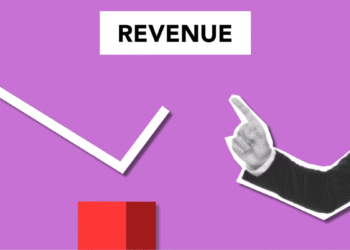Okay, real talk? I used to be terrified of asking for reviews.
I’d see all those warnings from Amazon, Google, Yelp—“Don’t incentivize reviews!”—and immediately panic like I was about to get banned for life just for saying, “Hey, mind leaving a review?”
But over time, I learned there’s a way to ethically and creatively encourage reviews without crossing the line. You can absolutely boost your review game without getting your business blacklisted.
I Thought I Could Get Away With a Discount Offer
When I launched my first product on Etsy, I figured I’d throw in a little card that said, “Leave a review and get 10% off your next order!” Sounded harmless, right?
Nope.
A month later, I got a passive-aggressive email from Etsy saying I’d violated their review policy. I didn’t even know I’d done anything wrong. Turns out, offering an incentive specifically in exchange for a review is against a ton of platform guidelines—even if you don’t say it has to be positive.
Lesson learned.
What Actually Works? (And Doesn’t Get You in Trouble)
After that little slap on the wrist, I started experimenting with ways to get more reviews without dangling a carrot that could get me banned. Here’s what’s been surprisingly effective:
1. Timing Is Everything
Right after delivery or a successful service is the best time to ask. That’s when your customer’s the happiest.
I use automated follow-ups now (thanks, AI!) that trigger 3–5 days post-delivery. Something like:
“Hey [Name], I hope you’re loving your [product/service]! It’d mean the world if you could leave a quick review—it helps other folks find us and supports small businesses like mine!”
That message feels personal. No bribes, just a genuine ask. If you want to take it further, check out automating review requests via email for some great workflows that scale.
2. Make It Stupid Easy
You’d be shocked how many people want to leave a review but don’t because they’re confused or lazy (I’m both, so I get it).
I embed direct review links in emails, include screenshots of the steps, and sometimes use QR codes on packaging. The fewer clicks, the better.
Need help setting that up? Here’s a helpful guide on how to display customer reviews effectively so they actually get seen and make an impact.
3. Use Social Proof to Inspire Others
This one’s sneaky-good.
Whenever someone leaves a glowing review, I screenshot it and share it on Instagram or in my newsletter with a little thank-you. People see that and go, “Oh dang, I should leave one too.” No rewards, no pressure—just good ol’ peer influence.
If you want to really lean into this strategy, explore how to use testimonials to build trust across your brand touchpoints.
4. Gamify Internally, Not Externally
If you’ve got a team, here’s something fun: reward your employees for helping get reviews, not the customers.
We ran a “Review Shoutout Challenge” at my old job where team members would compete to get the most organic reviews (just by delivering great service and asking politely). The winner got a coffee gift card. Worked like a charm and stayed within policy.
It’s like using a secret weapon encouraging customers to leave reviews the right way starts with making your team part of the process.
What to Absolutely Avoid? (Unless You Want Trouble)
Don’t say “positive review.” That’s a huge red flag.
No cash, discounts, or gifts in exchange for reviews. Even “enter to win” can be sketchy.
Avoid review gating. That’s where you ask only happy customers to leave public reviews and shunt unhappy ones to a private form. Google hates that now.
If you’re unsure about the rules, take a minute to read up on the legal considerations for displaying reviews. It’ll save you a headache later.
Honestly, it’s all about transparency. Ask nicely, make it easy, and let your happy customers speak for themselves.
Conclusion
Getting reviews is hard. It feels awkward at first. But the more you make it a natural part of your process, the less weird it gets. And when they start rolling in? It’s like magic—social proof that sells for you 24/7.
And bonus: you won’t be sweating over a platform policy violation at 2 a.m. like I did back in the Etsy days.






